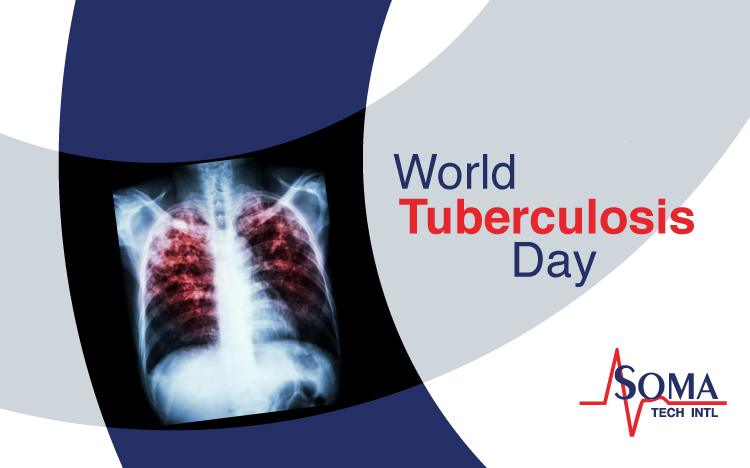World Tuberculosis Day 2020
March 24, 2020
World Tuberculosis Day 2020
World Tuberculosis Day was created to bring public awareness about the devastating epidemic and to eliminate the disease. Tuberculosis, also known as TB, is a disease that is caused by bacteria that attack the lungs. Not only does TB damage the lungs, but it can also damage other parts of the body such as the kidneys, spine and brain. Continue reading to learn more about Tuberculosis!
History
Tuberculosis has been around for almost nine thousand years. It would spread through humans and animals and along trade routes. These animals, including seals and sea lions, would contract the disease and carry it across the Atlantic where the hunters would be the first humans to get the disease.
Today, there is around one-quarter of the world’s population that is infected with the disease. TB is spread through the air when a person with Tuberculosis coughs, sneezes, or talks. While it is contagious, it is not easy to catch, and takes prolonged exposure to become infected. Usually, the immune system can prevent you from becoming sick.
Different Forms
There are three different forms of Tuberculosis:
- Latent – A person with a latent TB infection will not feel sick or have any of the symptoms. The bacteria will stay dormant in the body and cause no symptoms. Those who have this form of TB are treated with a combination of drugs to prevent the progression of active TB disease in later life. The treatment of latent TB kills the active germs that could cause the disease to become active.
- Active – A person with active TB may have a cough that persists for more than three weeks, coughing up blood, chest pain, breathing problems, weight loss fatigue, and even a fever. The infection may happen within the first few weeks of infection of the Tuberculosis bacteria or it may take years to occur. The treatment for active TB includes a heavy treatment of antibacterial medications that may take from six to twelve months to prevent the disease from spreading further.
- Drug-Resistant TB – A person with drug-resistant TB means that drugs that were initially used to prevent the progression are no longer able to fight the TB Germs in the body. Tuberculosis that is resistant to more than one drug is very dangerous and the treatment may take somewhere between 20 to 30 months to complete.
Risk
There are certain parts of the world that are at higher risk of contracting Tuberculosis; these areas include Africa, Eastern Europe, Asia, Russia, Latin America, and the Caribbean Islands. In most of these countries, infants are commonly vaccinated with bacillus Calmette-Guerin (BCG) to prevent Severe TB in children.
Today
Today, tests can be run to tell if you have a form of Tuberculosis. Skin testing is sometimes used but more often than not you get a false-positive. This false positive can come from a few different things. Some of these things include; having the BCG vaccine, having recently been infected, or if you have AIDS. A blood test can be used to confirm or rule out latent or active TB. These tests are designed with technology that can determine how your immune system would react to the TB bacteria. This test is optimal for those who are at high risk of getting TB and have had a negative response to the skin test.
Imaging tests are also used to help diagnose if you have Tuberculosis. Your doctor, or medical physician, can order an X-ray or CT scan of your lungs. This may show white spots on your lungs where the body’s immune system has separated the TB bacteria from the rest of the lungs. This test may also show changes in the lungs that indicate active tuberculosis.
Another way to be tested is with a Sputum test. This is where a doctor would take a sample of mucus that occurs when you cough and test it for the TB Bacteria. This test can also be used to test for the drug-resistant strain of TB. At the moment there are ten FDA-approved drugs on the market that can be used for treating TB.
Since 2000, 53 million lives have been saved through extensive diagnoses and treatment. Along with WHO (World Health Organization) and the creation of a fast-acting diagnostic test for rural countries that could detect if the patient had any resistance to the antibiotics, is used to prevent the spread of the disease. To help those infected with the disease stick with their treatments a program called DOT (directly observed therapy) where a healthcare worker can administer the medications. Treatment for Tuberculosis is complicated and lengthy at best. However, the vast majority of TB cases can be cured when medications and therapy are provided and taken properly.
Conclusion
In conclusion, if you do contract a form of TB you should seek medical attention and take antibacterial medications. After a few weeks, you will no longer be contagious and will likely feel better. However, it is pertinent that you finish the full course of therapy and or medications as prescribed by a doctor. Stopping a treatment too soon may cause the bacteria to stay alive and become drug-resistant – leading to a much dangerous version of TB which is more difficult to treat.
If you feel that you have symptoms of tuberculosis contact your doctor or seek out medical attention from a pulmonologist who can look at your lungs, run tests, and diagnose it further. Have you ever had TB? Do you know someone who has had a false positive or one that has had a true positive? Comment below!
Explore Other Blog Items By Category
Recent Posts


EKG vs ECG | What’s the Difference Between ECG and EKG?

